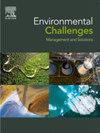Study on the impact mechanism of digital economy spatial network on regional carbon footprint
Q2 Environmental Science
引用次数: 0
Abstract
This study utilizes panel data from 30 Chinese provinces for 2013–2021 and constructs a modified gravity model to quantitatively assess regional digital economy connections. We explore how the characteristics of the digital economy spatial network (Hereinafter referred to as “DESN”), including its node centrality, affect regional carbon footprints (Hereinafter referred to as “CF”). The results indicate: (1) the development of DESN can significantly reduce regional CF, and this conclusion remains valid after various robustness tests; (2) the effect of DECN on regional CF varies depending on the differences in resource endowments between provinces, whether the province is located along the Yangtze River Economic Belt (Hereinafter referred to as “YREB”), and the constraints of local government environmental governance targets; and (3) the DESN can effectively reduce regional CF through green technology innovation (Hereinafter referred to as “GTI”), upgrading industry structure (Hereinafter referred to as “IS”), optimizing energy structure (Hereinafter referred to as “ES”), lowering energy consumption (Hereinafter referred to as “EC”), and improving marketization levels (Hereinafter referred to as “ML”), according to mechanism tests.
数字经济空间网络对区域碳足迹的影响机制研究
本研究利用2013-2021年中国30个省份的面板数据,构建了一个修正的引力模型,对区域数字经济联系进行定量评估。我们探讨数字经济空间网络(以下简称“DESN”)的特征及其节点中心性如何影响区域碳足迹(以下简称“CF”)。结果表明:(1)DESN的发展可以显著降低区域CF,经过各种稳健性检验,这一结论仍然有效;(2) DECN对区域CF的影响取决于各省之间资源禀赋的差异、各省是否位于长江经济带(以下简称“长江经济带”)沿线以及地方政府环境治理目标的约束;(3)机制检验表明,DESN可以通过绿色技术创新(以下简称“GTI”)、产业结构升级(以下简称“IS”)、能源结构优化(以下简称“ES”)、能耗降低(以下简称“EC”)、市场化水平提升(以下简称“ML”)等方式有效降低区域CF。
本文章由计算机程序翻译,如有差异,请以英文原文为准。
求助全文
约1分钟内获得全文
求助全文
来源期刊

Environmental Challenges
Environmental Science-Environmental Engineering
CiteScore
8.00
自引率
0.00%
发文量
249
审稿时长
8 weeks
 求助内容:
求助内容: 应助结果提醒方式:
应助结果提醒方式:


